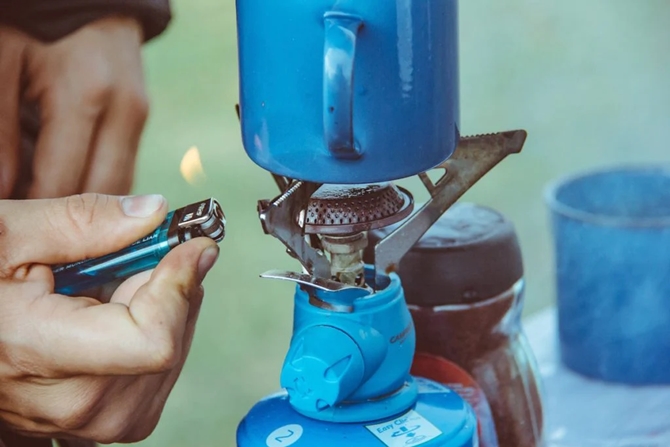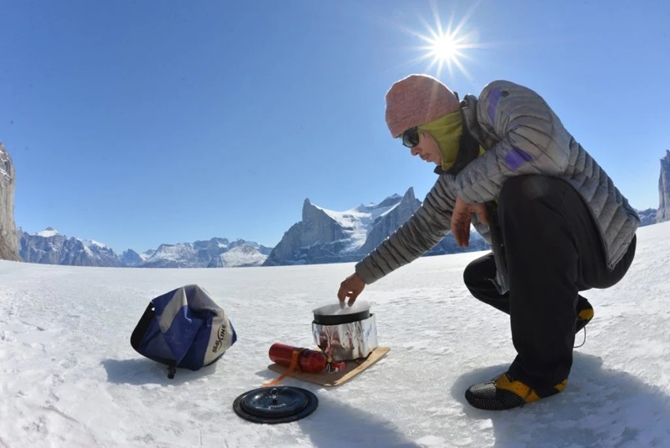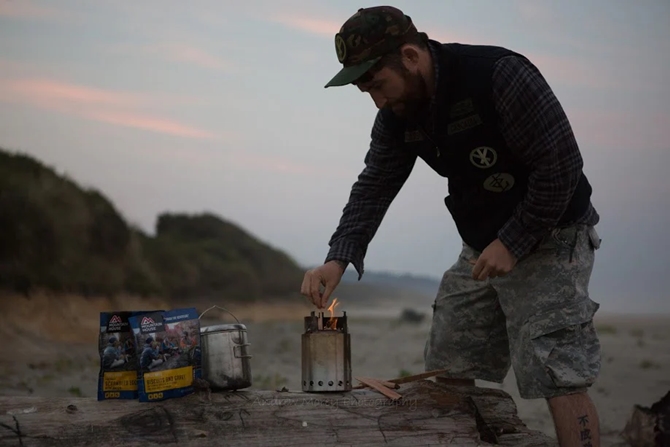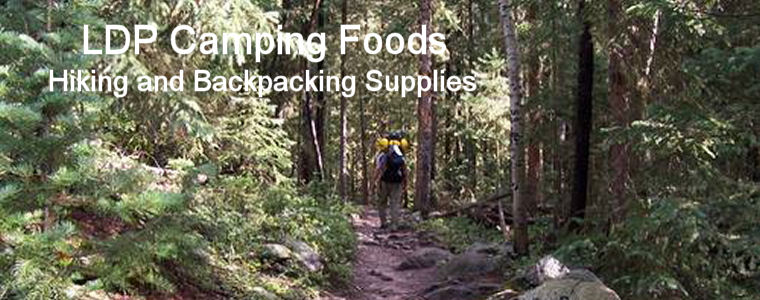Choosing a Backpacking Stove
A stove is among the most important items you’ll be
toting as a backpacker, not least because food is going to dominate a lot of
your thoughts out on the trail, and because heating water for tea, coffee,
and cooking meals are natural linchpin rituals of your wilderness days. And
obviously this is a subject matter very close to our heart here at
Mountain House.
If you’re a beginning
backpacker, though, choosing a backpacking stove can seem a bewildering
challenge given the number of options. That said, as with any piece of outdoors
gear, the process of selecting the
best backpacking stove for your needs becomes fairly straightforward if you
hash out a few basic details and bear in mind that you can (and probably
will) refine or altogether switch up your cooking hardware with more and
more experience out in the backcountry.
Let’s have a look at the general kinds of backpacking
stoves and the sorts of features you want to consider when choosing one!
Initial Considerations
Before digging in, it’s worth sketching out the
big-picture considerations to keep in mind when going shopping for
backpacking camping stoves.
- Type of Cooking & Cookware: What sort of backcountry
cooking do you like to do? Mountain
House meals require nothing more than bringing water to a
boil, which expands your backpacking stove options considerably given
all models should be able to do this most fundamental of tasks. (And in
fact you can make our Mountain House meals with cold water if
your situation requires, though you obviously won't get that "hot meal"
experience. Rehydration with cold water takes about twice as long.) If
you like indulging in more complicated cooking—say, meals that require
longer cooking time or simmering and other temperature finesse—you’ll
want to more closely assess a given stove’s relative flame control and
fuel efficiency. If you’re using a standalone stove, you also want to
make sure it’s compatible with your preferred cookware.
- Weight: Naturally the weight of a backpacking stove
and its associated fuel is an important consideration for a backpacker.
- Elevation: If you’re a climber, mountaineer, or
anyone who regularly treks in the high country, you’ll want to keep in
mind that some fuels don’t work as well at high altitude than others.
(We'll get to this later.)
- Type of Backpacking: As some of the above points
suggest, the sort of stove that’s best for you partly depends on the
kind of adventures you normally pursue. If you’re mainly a one- or
two-night backpacker, you don’t have to worry as much about stove/fuel
weight and refueling, whereas those are vital considerations for a
long-distance thru-hiker.
Main Types of Backpacking Stoves
While you’ll find a slew of different makes and models of
backpacking stoves on the market, the vast majority fall within a few basic
design categories mainly distinguished by the type of fuel they use.
1.
Canister Stoves: These
backpacking stoves use a pressurized gas mix of either butane and propane or
isobutane and propane. The stove simply screws into the top of the
one-time-use fuel canister, which serves as its base. Integrated canister
stoves comprise an all-in-one burner/pot unit that attaches to the canister.

2.
Liquid Fuel Stoves: These
backpacking stoves employ a reusable bottle filled with liquid fuel,
primarily white gas; “multi-fuel” options can also run on kerosene, diesel,
and other liquid fuels. Standard models attach a fuel bottle to the burner
with a tube or pipe as fuel line. Liquid fuel stoves usually require priming
and pumping to operate.

3.
Other Backpacking Stoves:
Canister and liquid fuel models are by far the most popular kinds of
backpacking stoves, but alternatives definitely exist. Backpacking wood
stoves are fueled by twigs and leaves: mini-campfires, basically. Other
stoves run off solid fuel pellets or denatured alcohol.

Now let’s sift through some of the advantages and
disadvantages of these basic species of backpacking stoves.
Canister vs. Liquid Fuel Stoves
Your average backpacker is likely going to be weighing
canister stoves against liquid fuel stoves, the two major categories.
Canister stoves with their pressurized gas can be very lightweight and
packable and are about as user-friendly and hassle-free as possible: Screw
the gas canister to the burner and light it, either with a match or with the
push-button igniters commonly incorporated. By comparison, a liquid fuel
stove demands periodic pumping to maintain pressure, and you need to prime
it as well by burning a bit of liquid fuel initially to pre-heat the system.
A liquid fuel bottle is also heavier than a gas canister and with the
associated fuel line can take up a bit more space.
But canister stoves do have their downsides. They don’t
perform as well in cold weather or at high elevations, though isobutane does
better in this regard than butane. Liquid fuel stoves work fine in these
conditions because you’re manually pressurizing them, so they're the go-to
choice for mountain climbers and winter campers. You can’t accurately gauge
how much fuel is left in a canister, so you’ll typically want a backup if
yours has been used a few times; liquid fuel bottles allow for precise
measurements. And there’s the wasteful element of those one-time-use
canisters compared with the refillable liquid fuel bottle, though of course
you’ll eventually be disposing of that as well. Finally, given their
versatility, multi-fuel stoves may be the preferable route to go if you're
doing much international backpacking.
White gas burns hotter than butane/propane or isobutane/propane
mixes, but generally speaking both liquid fuel and canister stoves boil
water quickly. Many models of both types allow for acute flame control for
simmering, though integrated canister stoves generally aren’t great for that
purpose.
Pros & Cons of Alternative Backpacking Stoves
Featherweight denatured alcohol stoves appeal to
ultralight and DIY backpackers. Ultralight devotees might also consider
wood-burning backpacking stoves: If the environment and conditions
allow—namely, an ample supply of dry biomass along your route—you don’t need
to carry fuel at all. That said, you'll be in a bit of trouble if you can’t
find dry tinder, and during fire season such stoves may be banned along with
campfires; you also need to double-check that collecting twigs and other
litter is allowed where you’re backpacking. Solid fuel tablets, meanwhile,
also make for lightweight and inexpensive stoves but can leave a sticky mess
on the bottom of your cookpot. And all of these alternative-fuel stoves
don’t tend to heat water as quickly as canister or liquid fuel units.
Mountain House: Compatible Backcountry Cuisine With a
Wide Variety of Camping Stoves
As we mentioned early in this post, a great benefit of
freeze-dried Mountain House meals is the simplicity of their preparation.
You need only boil water to prep them, which means backpacking stoves of
virtually any fuel type should work fine—though, again, some will get that
boil going much faster than others. If you're planning on doing other types
of cooking on occasion—meals requiring more protracted and/or
lower-temperature cooking—you need to more carefully weigh a given stove's
temperature control and fuel efficiency.
Here's to enjoying some gourmet deliciousness out in the great outdoors with
a good backpacking stove and Mountain House!
Thanks to
Mountain
House Blogs for the above information.

